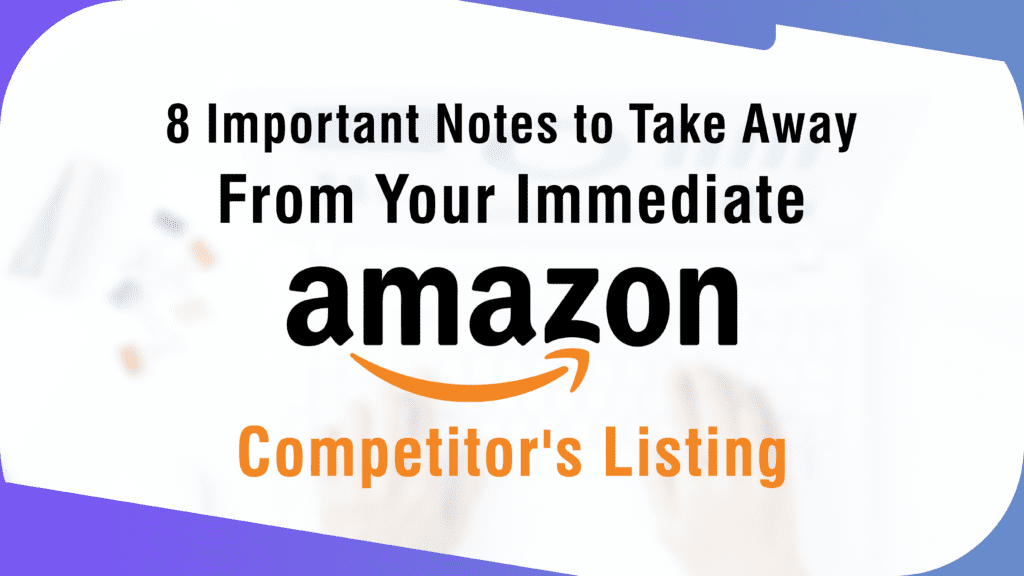8 Important Notes to Take Away From Your Immediate Amazon Competitor’s Listing
Competitor analysis in Amazon is critical to your performance in the marketplace. Monitoring your competitors’ efforts with a framework is a terrific method to ensure you can defeat them in their own game. Amazon Competitor Analysis Tool To compete with the best, you must understand your competitors’ strategies. An Amazon competitor analysis entails reverse engineering competitors, keyword research, product page comparisons, and much more. Mentioned below are 8 steps that will help to set your business up for success and drive external traffic to Amazon listing: Examine your competitors’ product listings – Begin your competition analysis by making a list of your competitors’ products. Make a sheet where you may rate each aspect of a product listing, from the title and description to the photos. Investigate your competitors’ branding – Following your audit, you should evaluate your competitors’ branding. Many sellers skip this stage in Amazon competition research, but it might provide insight into why customers select your competitor over you. Examine your competitors’ reviews – Following that, you should study the numerous product reviews from customers on your competitors’ product listings. This phase in the Amazon competitive analysis provides you with a wealth of information about your competition’s strengths and weaknesses. Visit the Amazon Store of a competitor – An Amazon Store functions virtually as a microsite for companies on Amazon, as it gives customers easy access to your products. Check to see whether your opponent has an Amazon store. Analyze your competitors’ targeted keywords – It is critical to research your competitors’ keyword strategies. You undoubtedly have an idea of what keywords your competitors employ based on your product listing audit. Examine your competitors’ prices – Price has a huge influence on buyers’ purchase decisions — it can even persuade them to buy from another provider. As a result, another critical component of an Amazon competitor analysis is evaluating the competition’s prices. Calculate your competitors’ monthly sales – By investigating your competitors’ monthly sales, you may strengthen your competitive analysis of them on Amazon. You may determine how much money your competition is making and whether they are underselling their products by knowing how much inventory they move each month. Examine your competitors’ advertising campaigns – To complete your Amazon competitor research, thoroughly examine your competitors’ advertising initiatives.
8 Important Notes to Take Away From Your Immediate Amazon Competitor’s Listing Read More »







